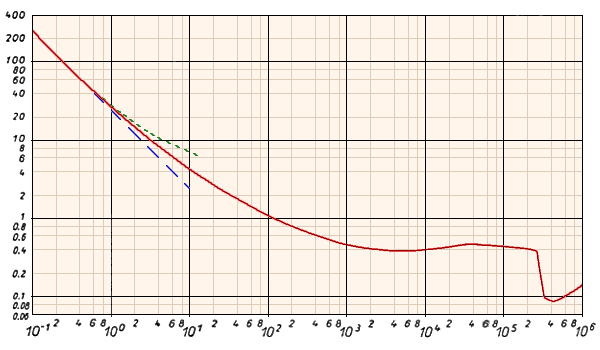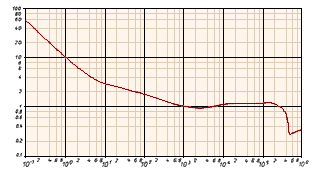|
|
|
|
|
| Water at 20
|
1.005 x 10-2 g/(cm s) | 1.007 x 10-2 cm2/s |
|
| Air at 20
|
1.808 x 10-4 g/(cm s) | 0.150 cm2/s |
|
Back to the Introduction.
Rather than break up the main presentation, I collect here some samples of the kinds of reference data and graphs that are available for use in analyzing fluid drag problems.
This first table gives a few typical fluid paramaters. Note that this table uses the cgs units of Ref. [1].
|
|
|
|
|
| Water at 20
|
1.005 x 10-2 g/(cm s) | 1.007 x 10-2 cm2/s |
|
| Air at 20
|
1.808 x 10-4 g/(cm s) | 0.150 cm2/s |
|
CD for a perfect sphere
Spheres have long been among the objects studied because of their ideal shape and common use as projectiles in the early history of ballistics. The data that lead to the red curve shown in the graph below are for a smooth sphere, and the curve used is a smooth line drawn through the data. The blue and green dashed lines are approximations that are discussed below.

The blue dashed line shows the approximation due to
Stokes' theory
for fluid flow around a smooth sphere at very low Reynolds number.
The formula obtained by Stokes says the drag force is linear in the
speed v and predicts that CD = 24/Re.
The definitions used are that Re = vD/
![]() and L2 =
and L2 =
![]() ,
where D = 2R is the diameter
of the sphere. (Notice that the 1/Re dependence produces
a straight line on the semi-log plot above.)
The graph shows that this approximation starts to break down even before
Re = 1, so we can only assume a simple linear v-dependence
for the drag on a smooth sphere for very small values of Re.
,
where D = 2R is the diameter
of the sphere. (Notice that the 1/Re dependence produces
a straight line on the semi-log plot above.)
The graph shows that this approximation starts to break down even before
Re = 1, so we can only assume a simple linear v-dependence
for the drag on a smooth sphere for very small values of Re.
The green dashed curve shows an improvement to this expression
due to Oseen, who obtained
Note that the red curve is approximately flat for Reynolds numbers between about 1000 and 300,000. In this region the drag force on a smooth sphere has a simple v2 dependence.
CD for a cylinder
Another case where there are data for drag on a simple object is that for a smooth cylinder transverse to the flow. I show an example of the drag coefficient for that case below. It shows many of the charateristics we saw in the case of the sphere.

Although I will not discuss the case of the cylinder in any detail, it could make a good example for home-laboratory study and has its practical application in things like bridge supports in a river.
Jim Carr